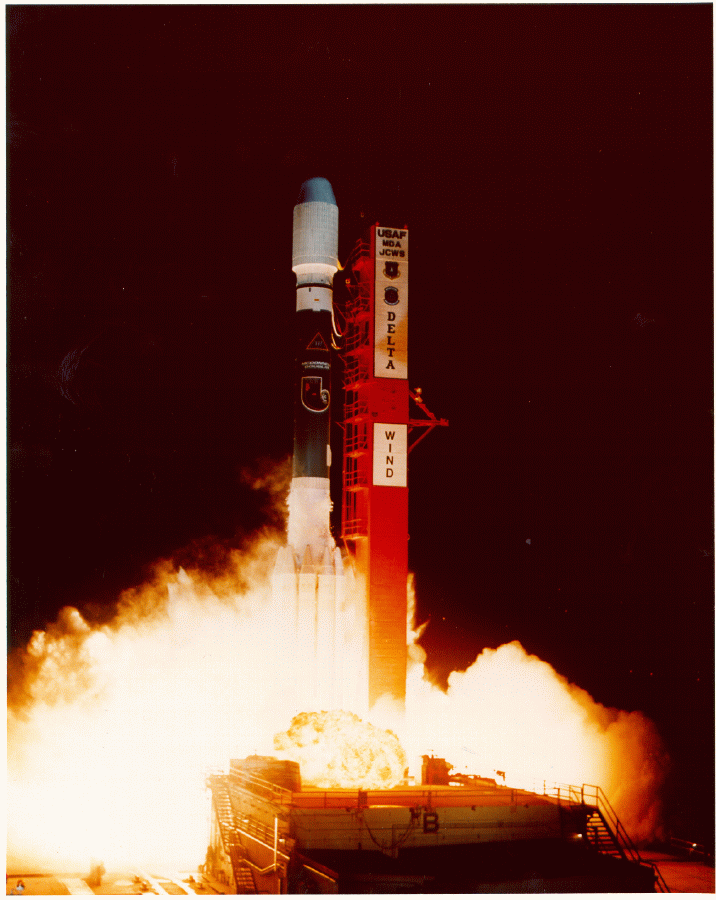Investigation Summary
The magnetic field experiment on WIND provides data for studies of a broad range of scales of structures and fluctuation characteristics of the interplanetary magnetic field throughout the mission, and, where appropriate, relate them to the statics and dynamics of the magnetosphere. The basic instrument of the Magnetic Field Investigation (MFI) on the WIND Spacecraft is a boom-mounted dual triaxial fluxgate magnetometer and associated electronics. The dual configuration provides redudancy and also permits accurate removal of the dipolar portion of the spacecraft magnetic field. The instrument provides:
(1) near real-time data at nominally one vector per 92 s as key paramter data for broad dissemination,
(2) rapid data at 10.9 vectors/s for standard analysis,
(3) occasionally, snapshot (SS) memory data and Fast Fourier Transform data (FFT), both based on 44 vectors/s.
These measurements are precise (0.025%), accurate, ultra-sensitive (0.008 nT/step quantization), and where the sensor noise level is < 0.006 nT r.m.s for 0-10 Hz. The digital processing unit utilizes a 12-bit microprocessor controlled analogue-to-digital converter. The instrument features a very wide dynamic range of measurement capability, from 4 nT up to 65 536 nT per axis in eight discrete ranges. (The upper range permits complete testing in the Earth's field.) In the FFT mode power spectral density elements are transmitted to the ground as fast as once every 23 s (high rate), and 2.7 min of SS memory time series data, triggered automatically by pre-set command, requires typically about 5.1 hours for transmission. Standard data products are the following vector field averages: 0.0226-s (detail data from SS), 0.092 s ('detail' in standard mode), 3 s, 1 min, and 1 hour, in both GSE and GSM coordinates, as well as the FFT spectral elements. As has been our team's tradition, high instrument reliability is obtained by the use of fully redundant systems and extremely conservative designs. We plan studies of the solar wind:
(1) as a collisionless plasma laboratory, at all time scales, macro, meso and micro, but concentrating on the kinetic scale, the highest time resolution of the instrument (=0.022 s),
(2) as a consequence of solar energy and mass output,
(3) as an external source of plasma that can couple mass, momentum, and energy to the Earth's magnetosphere,
(4) as it is modified as a consequence of its imbedded field interacting with the moon.
The launch of the WIND spacecraft on a Delta vehicle.
For details, see our MFI Team Science Page.
